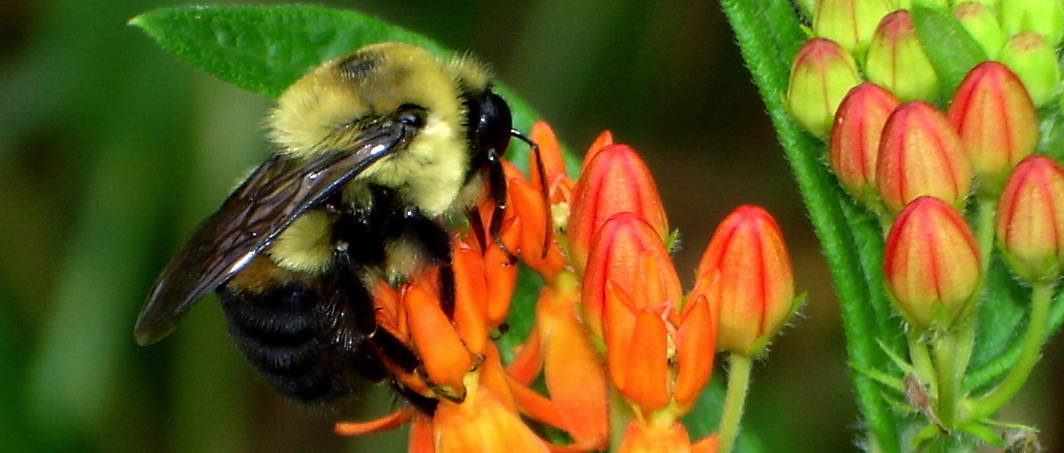Share this article
Bees Have Ways of Self-Medicating
It seems to make sense that chemicals such as alkaloids would be found in stems and leaves of plants and flowers as a way to deter potential herbivores. But it has long been questioned why their nectar contains these potentially harmful chemicals.
“Flowers have traits that both attract mutualists and deter an herbivores. We set out to ask whether nectar chemicals could function as pollinator attractants,” said Leif Richardson, a post-doctoral researcher at the University of Vermont and lead author of a new study published in the journal Ecology. Richardson, who conducted the study as part of his graduate research at Dartmouth College, set out to determine whether the chemicals could actually be an attractant to native bee species rather than a repellant.
What he found was that bees and plants can both benefit from higher concentrations of these chemicals.
In his first experiment, Richardson fed various chemicals to parasitized bees in a lab, including aucubin and catalpol. Of the eight chemicals he fed them, more than half had strong negative effects on the parasites, and which was good for the bees. Then, in a second experiment, Richardson took that knowledge to the field, creating artificial nectar with varying chemical concentrations and injecting them into bunches of control flowers, which he placed in a wetland environment. After carefully observing and recording data on bees that visited his flowers, Richardson collected each bee and tested it for parasites.
Bees that were found to have gut parasites tended to favor flowers with higher concentrations of the chemicals, whereas bees that were not parasitized either avoided the highly concentrated chemicals or made no distinction between the flowers. However, the bees could also experience some negative physiological effects of consuming high concentrations of these chemicals. Richardson likens it to humans only taking antibiotics when they are sick. Also noteworthy was the fact that the flowers with higher concentrations of chemicals exported more pollen because bees fed on them longer, suggesting these flowers would have higher reproductive success.
“We know that some bees are declining because of parasites,” Richardson said, who believes this new knowledge of bee diet and nutrition could lead to management practices that help stop population decline. “It’s possible that people could design landscape plantings or farm layouts a little differently so that bees would have more access to plants that have these medicinal chemicals in their nectar.”
As pollinators, bees play a big role in the success of agriculture in the U.S. In fact, according to Richardson, research shows that the majority of pollination for many agricultural crops comes from wild bees and, as a result, it’s important to understand and facilitate this natural service. “Because plant chemistry can affect bee health, farms — where plants are grown — could affect bee health. So just as farms can be places where bees get sick because of insecticide use, farms could also be places where bees gather medicinally active chemicals.”
Header Image: A bumblebee feeds on nectar from a flower. Image Credit: USFWSmidwest, licensed by cc 2.0








